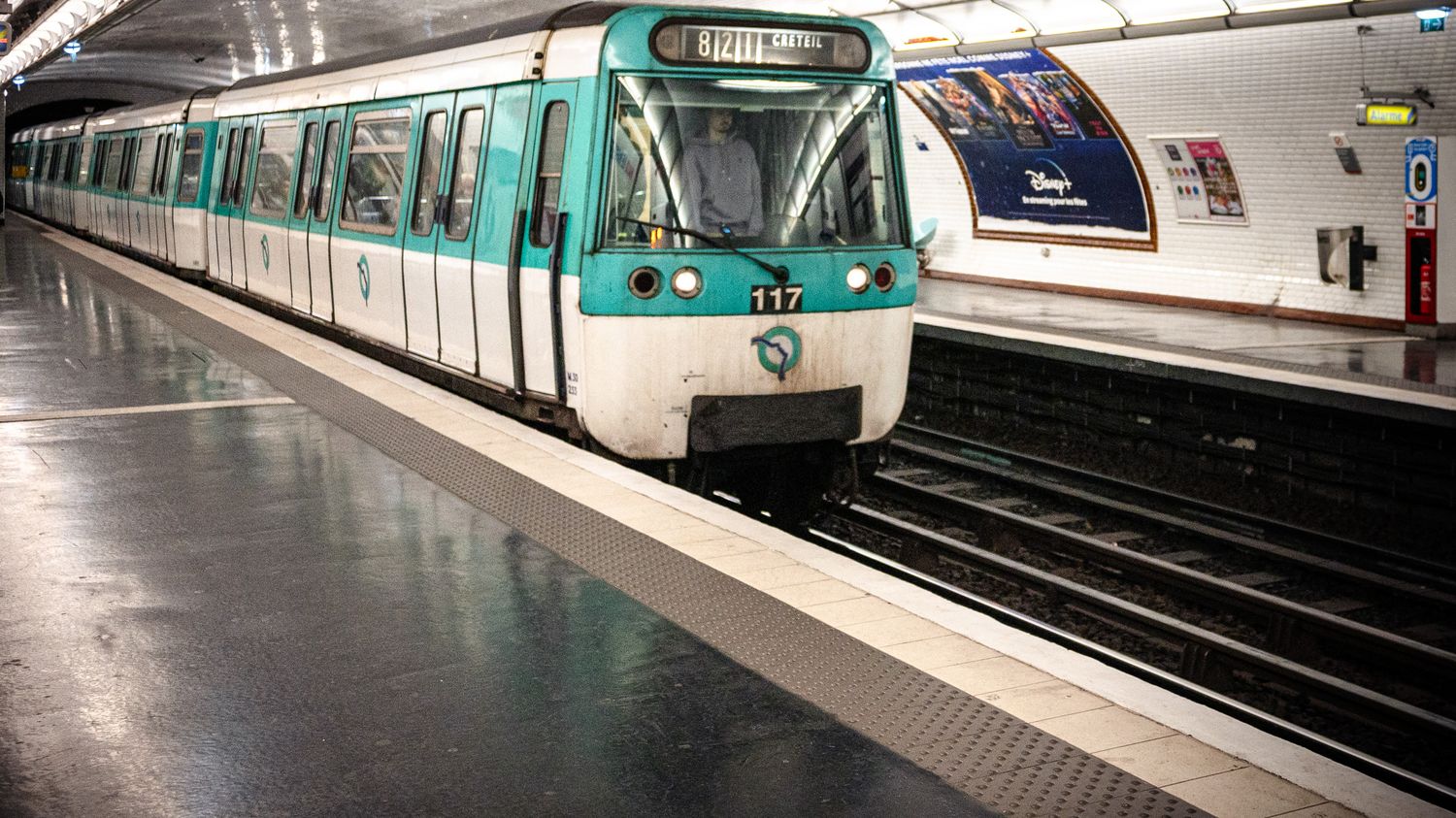Is the air in the Paris metro dangerous for your health? This is the question that the transport organizing authority Ile-de-France Mobilités (IDFM) and the association in charge of monitoring air quality in the region, Airparif, tried to answer. They are publishing for the first time a map of pollution in the Paris metro and RER. These new data, revealed on Monday January 22, come a few months after a study carried out for the France Télévisions show “Vert de rage”, which was contested by the RATP,
What do these new readings say? What are the health risks ? Franceinfo answers four questions about cartography.
How were the readings carried out?
Air pollution in public transport is worrying. Last spring, the Paris prosecutor’s office opened an investigation for “endangering others” targeting the RATP, suspected by the Respire association of hiding an abnormally high level of fine particles from its users. To have reliable data, IDFM carried out a large-scale study, with the support of Airparif, by asking the RATP and the SNCF to carry out readings for at least a full week, seven days a week, 24 hours a day.
The first results, published Monday, concern 44 of the 397 stations in the Ile-de-France network (metro, RER and Transilien). They are established from “reliable measurements due to the devices used, regulated for monitoring particles, and in relation to the duration of observations, permanent or at least one week, to take into account the variation in levels from one hour to the next “, details on its Airparif website. Surveys made “during the period 2015-2022”.
Which stations are the most polluted?
Three stations display a concentration of fine PM10 particles exceeding 480 µg/m3, i.e. the maximum threshold recommended by the national health security agency (ANSES) from one hour of exposure. The stations concerned are Belleville – already reported by the program “Vert de rage” as the most polluted station in the capital – Jaurès and Oberkampf, all located in the east of Paris.
Among the other stations studied, 31 display an “average level” of concentration of fine PM10 particles, that is to say between 140 and 480 µg/m3. This concerns Châtelet, Saint-Michel Notre-Dame and Auber. Finally, ten have a “low level”, therefore less than 140 µg/m3. Bibliothèque-François-Mitterrand, Bercy and Franklin D. Roosevelt are among them. No figures on PM2.5 particles, which are finer and more harmful, have been communicated at this stage.

Faced with these initial results, IDFM asked the RATP and SNCF operators to deploy an action plan to improve air quality in the most polluted stations. “The Belleville station will benefit from the renewal of a fan from 2024”, the authority promised in a press release on Sunday. Jaurès will see his fan reinforced this year. In Oberkampf, where a new fan has been operating since the end of 2023, two additional structures will be built this year. “These three stations will go at least orange, if not green”wants to believe the general director of IDFM, Laurent Probst, quoted by AFP.
In addition, Airparif speaks of a “scalable map”. In fact, the concentrations in the 397 other metro and RER stations as well as the lines will be published in June. “The particles are not the same in the trains and on the platforms. In general, it is a little lower in the trains, because the air is ventilated. We will have the verification in June”adds Laurent Probst.
Where does pollution come from?
Fine particles are produced when trains brake. “Abrasion of wheels, rails, brakes and contact line generates fine dust”in fact describe the Swiss railways on their site.
To limit the impact, IDFM asked to deploy “as quickly as possible a system which reduces the emissions of fine particles generated when trains brake”, particularly on RER A and metro lines 1, 2, 3, 4, 5 and 9. At this stage, only the latest generation MP14 metros, deployed on lines 4, 11 and 14, have electro-magnetic braking, which does not emit fine particles.
This fine particle pollution also comes from polluted street air, via the station ventilation system. In 2022, Respire also pointed out the air vents. His study showed that “the concentrations of particles suspended in the air (PM10, PM2.5 and PM1 in μg/m3) are on average twice as high in the surrounding areas [de ces zones] than in urban outdoor air”
What are the health risks ?
The concentration of fine particles can cause respiratory difficulties or illnesses, especially in vulnerable people. At this stage, however, the very limited scientific literature on air quality in the metro prevents us from deciding on the consequences for health. In a review (PDF) delivered in May 2022, ANSES thus suggested the risk “inflammation of the airways, particularly in sensitive populations such as asthmatics” Or “effects on cardiac autonomic function”. She rejected the “increased risk” lung cancer or myocardial infarction.
Asked by The Parisian after the publication of the mapCNRS researcher and former president of Airparif Jean-Félix Bernard emphasizes that “the problem with fine particles is overpollution, that is to say the number that we add during the day. And the high thresholds established for this map start from the principle that there is no “no external pollution. That it would only be in the metro that we breathe particles. While this is not the case, they accumulate with the outside air.”
For their part, RATP employees, exposed over longer periods, expressed their concern. The Solidaires union thus seized the administrative court, it reported Monday on X, arguing in particular “protecting the health of workers and users”.
“The work communicated by Airparif and IDFM does not reflect the exposure of travelers or employees”, reacted Sophie Mazoué, sustainable development manager for the RATP group. According to her, no user or employee stays on a platform for an hour, and data should also be available in the trains.
